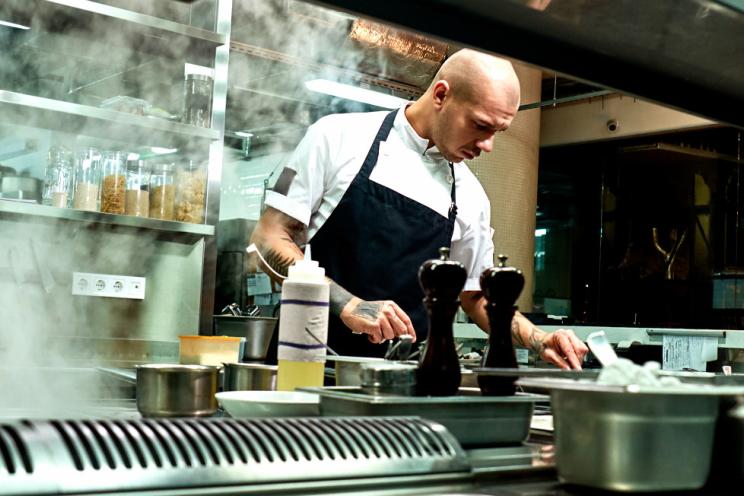
Unlock Profitability with Restaurants by Leveraging P&L Mix Reports
Unlocking profitability in the restaurant sector is a perpetual pursuit for owners and operators. Amidst the dynamic landscape of changing consumer preferences, fluctuating costs, and evolving competition, maximizing profitability demands strategic insight and informed decision-making. One powerful tool in this pursuit is the employment of Profit and Loss (P&L) mix reports.
These reports offer a comprehensive analysis of a restaurant's revenue streams and expenditures, providing invaluable insights that can guide efficient resource allocation and revenue optimization strategies.
Understanding the P&L Mix Report
The P&L Mix Report, or the Profit and Loss Statement, is a financial document outlining a restaurant's revenues, costs, and expenses over a specific period. It provides a detailed breakdown of the various components contributing to the restaurant's financial performance, including sales revenue, food and beverage costs, labor expenses, overheads, food sales, cost of goods sold (COGS), overhead expenses, and net profit.
However, what sets the P&L Mix Report apart is its ability to analyze the composition of costs and revenues in detail. Instead of merely presenting overall figures, it dissects them by categories, enabling stakeholders to identify trends, pinpoint areas of strength and weakness, and make informed decisions to enhance profitability.
Leveraging P&L Mix Reports for Profitability
Optimizing Menu Pricing and Cost Management
One of the most significant advantages of P&L Mix reports is their ability to inform menu pricing strategies and cost management initiatives. By analyzing the revenue contributions of different menu items, you can identify the best-selling items, their associated costs, and profitability as well as high-margin dishes, and optimize pricing accordingly.
With this insight, you can streamline your menu, eliminate underperforming items, promote high-margin dishes, and adjust pricing strategies to optimize revenue.
Additionally, understanding the COGS associated with each menu item allows for more effective cost management. For example, if a particular dish has a high COGS relative to its selling price, adjustments can be made to improve profitability without compromising quality.
Identifying Revenue Trends and Opportunities
P&L Mix reports provide valuable insights into revenue trends over time. By comparing revenue performance across different periods, such as weeks, months, or seasons, you can identify patterns and capitalize on opportunities.
For instance, if certain menu items experience a surge in popularity during specific times of the year, you can adjust your offerings and marketing strategies to maximize revenue during those periods.
A sudden spike in food costs might signal supply chain disruptions or inflationary pressures, prompting proactive measures such as renegotiating contracts with suppliers or revising menu offerings. Similarly, declining sales in certain categories could indicate changing consumer preferences, necessitating menu innovations or marketing campaigns to attract customers.
Managing Labor Costs and Staffing Efficiency
Labor costs often represent a significant portion of a restaurant's expenses. P&L Mix reports allow you to track labor costs relative to revenue, track key metrics such as labor cost per hour and sales per labor hour, and identify opportunities for optimization.
By analyzing labor costs alongside sales data, you can determine optimal staffing levels for different times of the day or week. Additionally, insights from P&L Mix reports can inform scheduling practices, staff training initiatives, performance incentives to improve efficiency and reduce costs, and implement efficiency measures to control labor expenses without compromising service quality.
Performing Cost Analysis
P&L Mix reports allow restaurant owners to scrutinize their cost structures meticulously. By comparing the proportion of different expenses to total revenue, you can identify cost outliers and take corrective actions.
For instance, if food costs are disproportionately high, it might indicate issues with procurement, portion control, or menu pricing, which can be addressed to improve margins.
Streamlining Operations and Controlling Overheads
Overhead expenses, such as rent, utilities, and marketing, can significantly impact a restaurant's profitability. P&L Mix reports help you identify areas where overhead costs can be controlled or reduced without compromising operations.
For example, if utility expenses are higher than expected, restaurants can implement energy-saving measures or negotiate better rates with suppliers. Similarly, by analyzing marketing expenses and their impact on revenue generation, you can refine your marketing strategies to achieve better ROI.
Benchmarking and Goal Setting
P&L Mix reports enable your restaurant to benchmark its performance against industry standards and competitors. By comparing key financial ratios such as gross profit margin, operating expenses ratio, and net profit margin, you can assess your relative performance and set realistic goals for improvement.
Unlocking profitability requires more than just serving delicious food and providing excellent service. It demands strategic decision-making based on comprehensive insights into the financial drivers of the business.
P&L Mix Reports serve as invaluable tools in this regard, empowering restaurant owners and managers to dissect their financial performance, identify opportunities for improvement, and chart a course toward sustained profitability. By leveraging these reports effectively, your restaurant can survive and thrive in today's challenging business environment.
Today, restaurants can easily dive into these reports and plenty of other reports and analyses because of the POS software and the advancements and integrations offered to it that automate all your processes and enhance performance.





